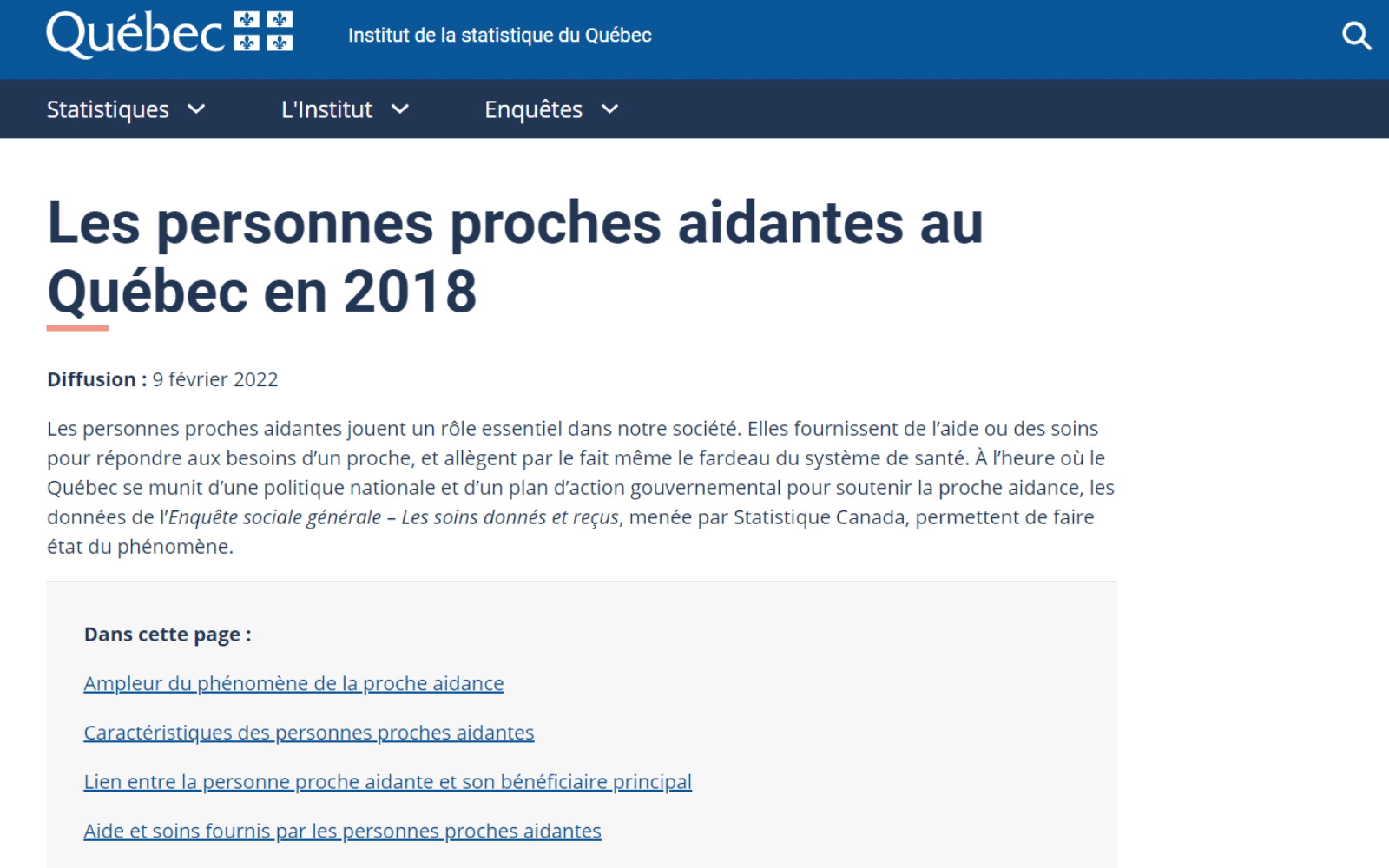This online publication (in French) from the Institut de la statistique du Québec (ISQ) presents selected findings from the Statistics Canada 2018 General Social Survey (GSS)– Caregiving and Care Receiving, whose aim was to provide a snapshot of the lives of caregivers and care receivers in today’s Canada. The target population was all non-institutionalized persons aged 15 and over who live in Canada’s 10 provinces. The specific data compiled by the ISQ concern caregiving in Quebec, including the scope of caregiving in the province, caregiver characteristics, the caregiver/care receiver relationship, and the care and assistance provided.
To further explore the 2018 and ourunderstand explore caregiver the issues and gender, reportrecommend reading with (in French), “Qui sont les personnes proches aidantes au Québec et quel type de soutien apportent-elles” ? Une analyse différenciée selon le sexe et l’âge.


